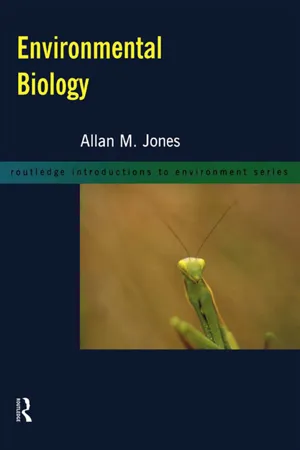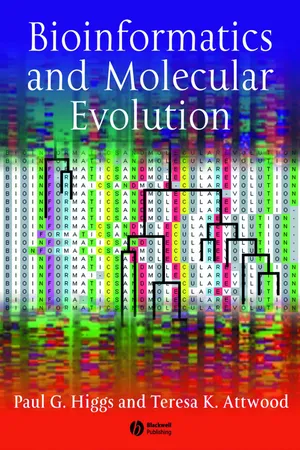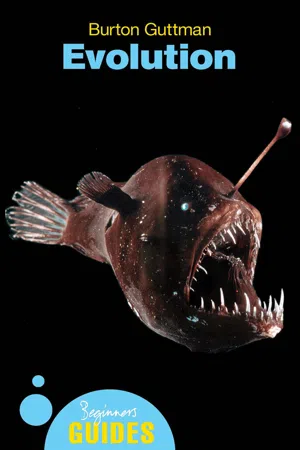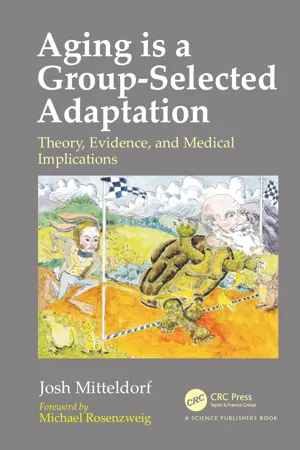Biological Sciences
Evolution of Populations
The evolution of populations refers to the changes in the genetic makeup of a group of organisms over time. It involves processes such as natural selection, genetic drift, gene flow, and mutation, which can lead to changes in the frequency of certain traits within a population. Understanding the mechanisms of evolution is crucial for studying the diversity and adaptation of living organisms.
Written by Perlego with AI-assistance
Related key terms
4 Key excerpts on "Evolution of Populations"
- eBook - ePub
- Allan M. Jones(Author)
- 2006(Publication Date)
- Routledge(Publisher)
PopulationsKey concepts- Genetic variation is related to the method/s of reproduction in a species. Sexual reproduction results in genetic mixing.
- Genetic variation within a population gene pool is the working material for natural selection.
- Inbreeding results in reduced variation within the gene pool while outbreeding increases it.
- Many factors influence the genotypes and gene frequencies of populations and small populations are particularly susceptible.
- Speciation is the result of mechanisms which isolate populations from gene flow.
- Populations of a species occupy a niche but its members are distributed in space (dispersion patterns) and vary in age and size (population structure).
- Environments have a finite carrying capacity (K).
- Populations are subject to both density-dependent and density-independent controls.
- Intraspecific and interspecific relationships are dominated by competition and by predator– prey interactions.
Populations are groups of individuals of the same species living in a defined geographical area. These individuals share many morphological, physiological and behavioural characters but no two individuals are ever exactly the same, although clonal forms produced by asexual reproduction or parthenogenesis will be extremely similar. Even genetically identical individuals may vary due to differences arising during growth and development. It is this variation that provides the raw material for natural selection. The aim of this chapter is to describe and discuss the characteristics of populations and the parameters, both internal and external, which exert control upon them.6.1 Ecological geneticsNatural selection - eBook - ePub
- Paul G. Higgs, Teresa K. Attwood(Authors)
- 2013(Publication Date)
- Wiley-Blackwell(Publisher)
CHAPTER 3
Molecular evolution and population genetics
CHAPTER PREVIEWThis chapter covers some basic ideas in evolution and population genetics that provide a foundation for work in bioinformatics. We discuss the role of mutation, natural selection, and random drift in molecular evolution. We present the basics of the coalescence theory that describes the descent of individuals from common ancestors, and discuss the relevance of this theory to human evolution. We consider the theory of fixation of new mutations in a population, and describe the way the fixation probability depends on strength of selection for or against the mutation. We compare the type of variation seen within a population with the differences seen between species, and compare the adaptationist and neutralist explanations for sequence variation both within and between populations.3.1 WHAT IS EVOLUTION?
We argued in the Introduction (Section 1.4.2) that evolution is essential to understanding biology and bioinformatics. Biology is the study of life. While it is usually obvious to us whether something is alive, it is not so easy to come up with a satisfactory definition of what we mean by life. One definition that we like is that used by scientists in the NASA astrobiology program, who are interested in searching for signs of life on other planets. If you are going to search for something, it is important to know what you are looking for!Life is a self-sustained chemical system capable of undergoing Darwinian evolution.You may know of other definitions of life, or be able to come up with one of your own. One reason we like this one is that it underlines the importance of evolution in biology by including it in the very definition of life. Of course, this begs the question of how to define evolution.Most people have an intuitive idea of what is meant by evolution, and are familiar with phrases like “survival of the fittest”. Everyone also knows that modern ideas of evolution can be traced back to Charles Darwin, whose famous book On the Origin of Species by Means of Natural Selection - eBook - ePub
Evolution
A Beginner's Guide
- Burton Guttman(Author)
- 2005(Publication Date)
- Oneworld Publications(Publisher)
At one extreme, the entire species may be one population in which any individual can contact and mate with any other individual of the opposite sex. More likely, though, the species will be divided into many local populations, or demes, but with a certain amount of genetic mixing, or gene flow, among them. At the other extreme, some or all of the demes may be isolated from one another, so little or no gene flow occurs. Most speciation depends on having such partially or completely isolated populations, but analyzing the genetic structure of populations begins with a large, undivided population of the first type. the idea of a Mendelian population So populations are extremely variable genetically, and selection acts upon this variation. Evolution is a phenomenon of populations, and our understanding of the process has been aided enormously by understanding how genes behave in populations. Population genetics begins by setting up an idealized model – in fact, a model in which there is no evolution at first. In 1908, the English mathematician G. H. Hardy and the German biologist Wilhelm Weinberg independently discovered that an idealized population will come to an equilibrium for each gene, a condition in which its genetic composition doesn’t change. This fact, now known as the Hardy-Weinberg Principle, is the foundation of population genetics. The theory begins with an ideal population with these features: • It reproduces sexually and is diploid, which simply means that each individual has two copies of its genes, one inherited from each parent. • It is large enough for the laws of probability to operate. • Mating occurs at random. • No mutation takes place. • No genotype has a selective advantage over any other, and all members of the population survive and reach reproductive age. • No genes enter from other populations. Notice that since no mutation and selection occur, such an idealized Mendelian population is not evolving - eBook - ePub
Aging is a Group-Selected Adaptation
Theory, Evidence, and Medical Implications
- Joshua Mitteldorf(Author)
- 2017(Publication Date)
- CRC Press(Publisher)
6 CHAPTER Evolving Population Control SynopsisThe key to resolving the paradox of aging in evolution is to question the persistence of ecosystems. In both neo-Darwinism and MLS theory, a static ecosystem is assumed as the background within which evolution of a single species occurs. But demographic stability is not to be taken for granted. A race among individuals to reproduce as fast as possible can lead to a tragedy of the commons. If individual organisms succeed, then they do so by grabbing the available resources more aggressively than their sisters and brothers. Then they produce offspring that are even more profligate in the next generation. This process of evolving individual super-competitors leads to collective consequences that can destroy the ecosystem on which all their lives and their children’s lives depend. No species that is evolved to reproduce without restraint can expect to survive more than a few generations in its habitat. This is the dynamic we examine in this chapter.Yes, evolutionary fitness is about efficient reproduction; but it is also about stability and sustainability. All animal populations exist in the context of an ecosystem and if they kill the tree in which they are perched, the tree brings them down with it. Hence species have evolved cooperation in order to tame the boom/ bust cycles of nature: to prevent extinction.The science of ecosystem stability—like the science of aging—has run afoul of evolutionary theory and has its own contentious history. The two stories are intertwined. Taking StockWe have seen abundant evidence that group selection has been far more effective than theory would lead us to believe. Even the expanded framework of multilevel selection theory fails to predict natural selection of such adaptations as dioecious sex, which have steep short-term costs and advantages that only accrue over many generations.
Learn about this page
Index pages curate the most relevant extracts from our library of academic textbooks. They’ve been created using an in-house natural language model (NLM), each adding context and meaning to key research topics.



